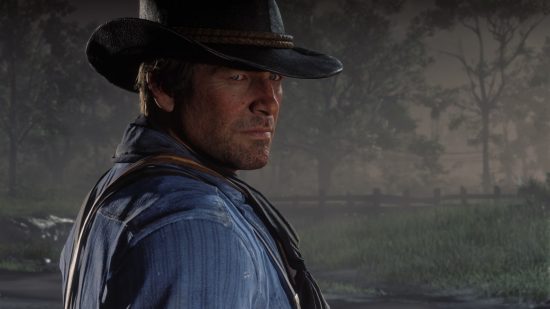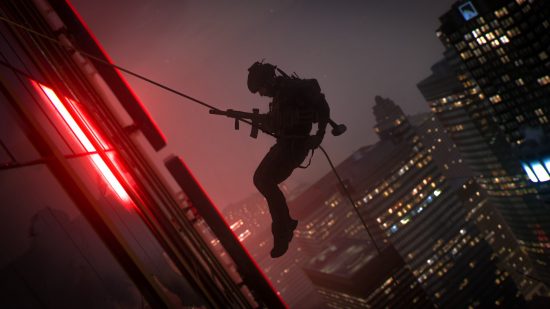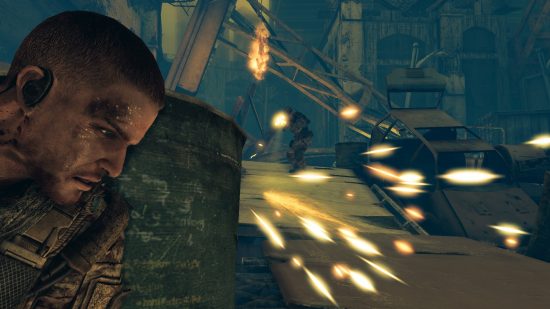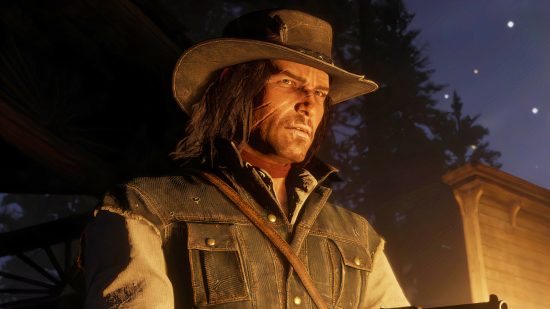Call of Duty, Red Dead Redemption 2, Far Cry, GTA, and countless other shooting games struggle to tell coherent stories. This isn’t to say these games are bad, or that they don’t have their own, various, narrative qualities – RDR 2 and GTA 4 especially are very competently written. But all of these shooters have the cohesion and potency of their drama almost terminally undermined by the same issue – one which classic Christmas film Die Hard neatly illustrates.
I’m going to use Red Dead Redemption 2 as the premier example here, because it’s a well-written action adventure game, the characters are convincing, and it’s broadly regarded as being surprisingly, almost groundbreakingly cohesive for an open-world shooter. RDR2 is, in short, one of the best examples of narrative and drama in large-budget videogames, and even it – for all the superlatives you might apply – is almost undone by this persistent, borderline-fatal flaw shared by modern shooting games.
Arthur Morgan is a cowboy with a conscience. Particularly as RDR 2 progresses, he becomes increasingly sensitive to the struggles of John, Abigail, and Jack, and, correlatively, more disturbed by the worsening violence from Dutch, Micah, and the rest of the gang’s more mercenary members. He is – by the game’s quasi climax – a vulnerable character whose fate seems to hang perpetually in the balance.
The threats of capture and impending death, and the need to become a better person, motivate him throughout his personal final act. Likewise, the Van der Linde gang itself is described as constantly precarious, narrowly avoiding apprehension from local sheriffs and Pinkerton detectives, and desperately trying to maintain a low profile sufficient that they can accrue enough money to escape civilisation.
Like coal turning to a diamond, Arthur Morgan and Red Dead 2’s story develops and improves owing to the constant application of pressure: if Arthur and the gang are to get what they want and potentially inaugurate a better life for themselves, they first have to survive.

All of which – dramatically, narratively, thematically – is close to obliterated by the fact that Arthur, at any given point, can effortlessly and without consequence gun down literally hundreds of armed opponents, be they members of the law, rival bandits, or even trained soldiers.
We kill, and kill, and kill in Red Dead Redemption 2. As critics and players, we’ve already argued about the ethics of presenting violence as blasé, but what’s less discussed is how the stratospheric bodycount in Red Dead Redemption 2, or any of the other games mentioned in this article, effectively robs shooters of dramatic potency – how every concern, issue, or obstacle a character may face, emotional or otherwise, becomes significantly harder to take seriously when they, canonically, are able to swiftly (often stylishly) overpower anyone that might cause them harm.
When Arthur Morgan single-handedly dispatches 40 or 50 or 60 Saint Denis officers, his later conversations with Dutch, about how the gang has to keep a low profile and is at risk of being killed by the pursuing law, become very hard to take seriously. By association, the story of the deteriorating dynamic between Dutch and Arthur, whereby Arthur starts to view his long-time mentor as increasingly unhinged and disturbingly willing to put the rest of the camp at risk in order to satisfy his own regal ambitions, loses credibility and dramatic weight.
Also, if Arthur can murder, seemingly, anybody who might confront him, in any number, how could anything Dutch does really put Arthur or his friends at risk, and why would he be worried about that? FPS games like Call of Duty, Far Cry, and other gun-toting games like GTA – if one of the basic catalysts for melodrama is threat, or at least a basic sense of contest or confrontation, games where it’s eminently possible to get away with killing everyone arguably sacrifice that particular narrative fundamental.
Which is not to say there isn’t value or worth in games where you kill with absolute power and impunity. The story of Doom, so much as its persistent sense of the Doom Slayer’s invulnerability and righteousness of his battle against Hell ratified by every mechanic and design choice can be called a story, works precisely because of the lethality and durability offered both to the character and the player – Doom is fun, and dramatically enjoyable and rewarding, for the fact you can kill and survive anything.

Not every shooter falls victim to the same issue, whereby the protagonist’s unassailable skill with a gun renders them immune to the threat, and in the process neutralises the drama. On the contrary, the dramatic potential and cohesion of some shooters rely on, and are made more gratifying by, the characters’ superlative ability – and not just with Doom, but Halo, Gears of War, and Max Payne.
However, in the case of games where vulnerability, danger, and a sense of being the underdog are vital to the plausibility of the plot – where, in order to be thrilled by our hero’s adventure, we must also believe that they are somehow against the odds and surviving but only precariously – I’d turn to Die Hard, unquestionably the greatest Christmas film, to serve as model.
One of Die Hard’s greatest qualities is the efficiency and clarity with which it establishes stakes. We’re reminded, at several interludes, precisely how many terrorists confront John McLane: 12, or 13 if you count the peevish hacker Theo. Similarly, the film reinstates, at every opportunity, John’s susceptibility and reception of damage.
He has no shoes. He begins the film with a handgun only. Crawling through a vent makes him dirty. Walking over glass makes him bleed. In the movie’s climax, when he finally comes to kill Hans Gruber, who has taken John’s wife, Holly, hostage, she takes one look at John, limping, bleeding, shot in the shoulder, and remarks simply: “Jesus.” This is a hero who sweets, bleeds, and could at any point get killed.
Faced with tangibly insurmountable odds – 12 on one – his struggle, his narrative, becomes more compelling as it comes at the cost of his body. He is, to the extent that an action hero performed by Hollywood star Bruce Willis can be, a human, something we recognise if not through his fear, his indelicate language, and his desperate improvisation throughout the film, then at least by his breakable anatomy.
McLane’s story, then, becomes one to which we can more easily relate. Just as we have our own human dramas, intimately understood to ourselves, John’s ardour is clear and instantly comprehensible to us as difficult and unfair: all alone, he must kill 12 men.
The effect of that, of perceiving and empathising with the momentousness of what John must overcome, is compounded by our recognising him as a person. Like us, he has limits, made metaphor in Die Hard by his slow, physical degradation. Like us, he has to deal with unjust and brutal circumstances.
This is a story we can get behind, which in turn makes every flourish of violence and spectacle all the more gratifying. When John McClane succeeds in killing someone, it means something to him – 11 now, down from 12, and closer to survival. And since John is noticeably a person, one of us, that victory and all the emotions and inner drama that attend it, is transferred over to us.
On the contrary, if we can kill and kill and kill, as is pattern in shooters, any attempt made by the game to humanise or present as vulnerable our protagonist becomes much harder to believe, with the cohesion of the game overall suffering as result.

Arthur Morgan sweats, swears, drinks. He makes awful mistakes, and, like John McClane, is shown to have a human body, susceptible in his case to tuberculosis. To an extent it works: he is still one of the most empathetic and recognisably humane characters in popular, big-budget games. But even as he’s allegedly in the final days of life, weakened and moldered by TB, Arthur can still murder literally dozens of armed opponents unimpeded.
Joel from The Last of Us, which comes to PC in March, is another example, narratively a tortured everyman constantly fearful for his own and Ellie’s survival, mechanically an unstoppable killer, spilling blood by the fluid ton. The solution however is not always to avoid violence in games, or only to moralise over it like a Spec Ops The Line or This War of Mine.
Rather, violence needs to be contextualised and meaningful, to somehow affect the character and the story. This impact and meaning can still be joyful and rewarding – I guarantee that killing enemies in a videogame, when you know who they are, what they’ve done, and what killing them means, would be more gratifying even in a basic, primal way than killing a bunch of fodder.
But the bodycount in shooters, at least those with certain dramatic pretensions, needs to come down, otherwise we’ll always be playing as unrelatable super-people, whose inner lives, no matter how well constructed, will feel terminally unfamiliar.
